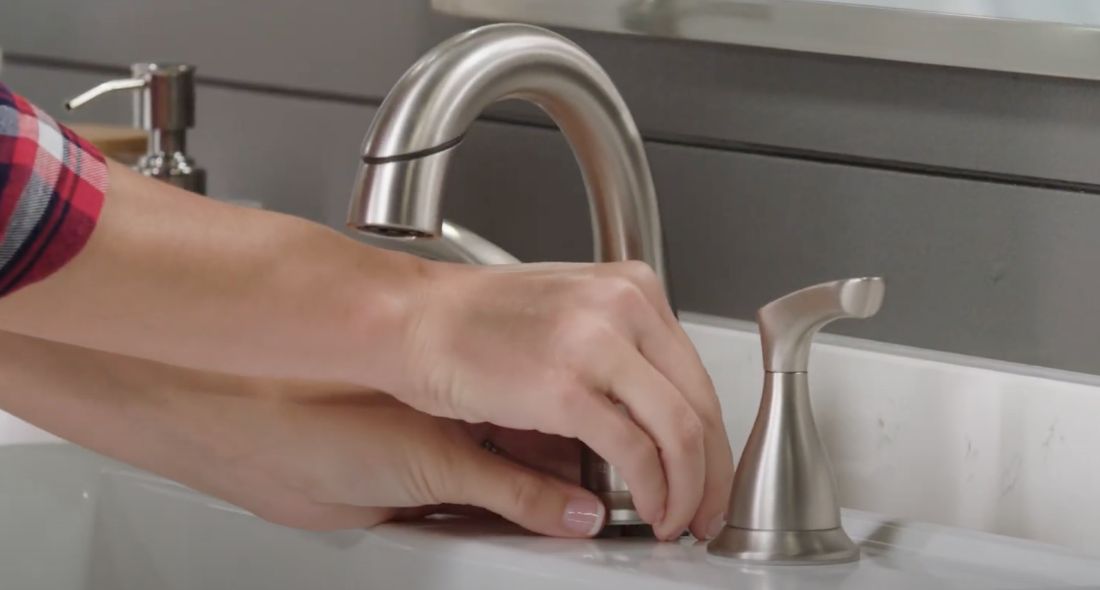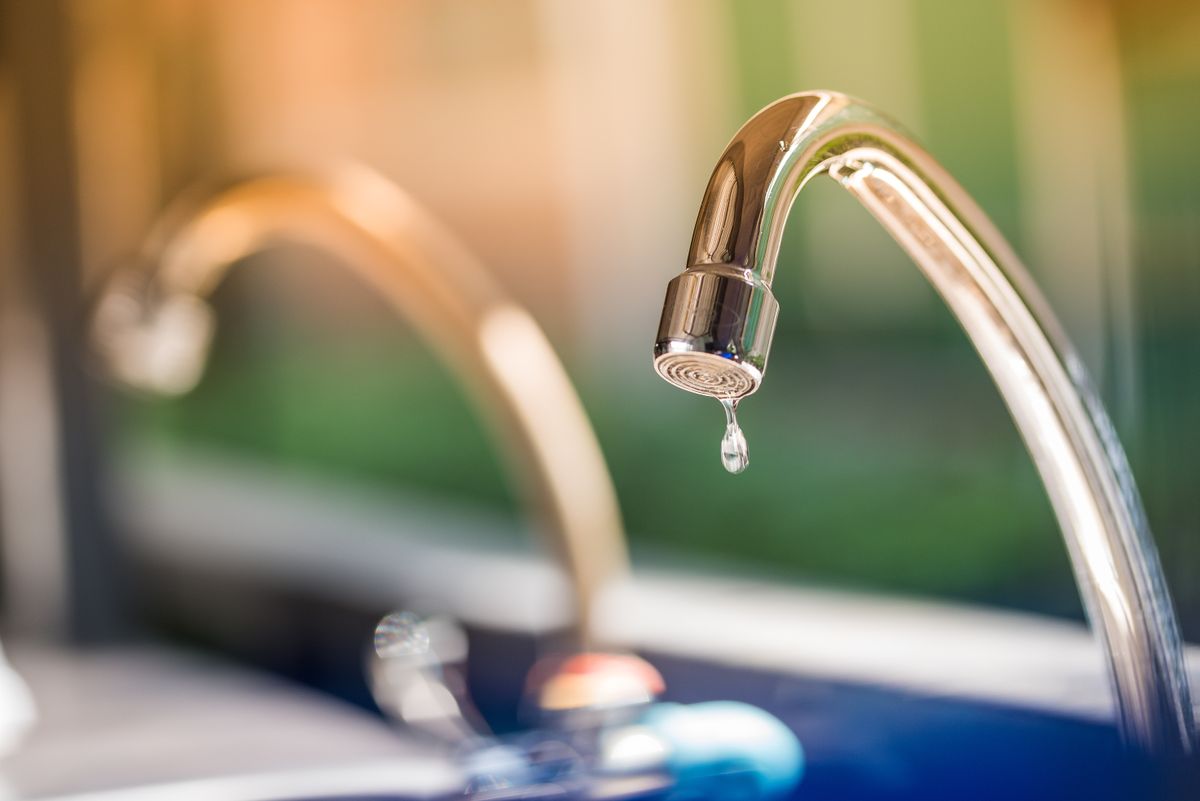Learning the Significance of Fixing a Broken Faucet
Learning the Significance of Fixing a Broken Faucet
Blog Article
The publisher is making a number of good pointers relating to Why It's Important to Fix Leaky Faucets as a whole in the article in the next paragraphs.

Leaking faucets might look like a minor hassle, but their impact goes beyond simply the aggravation of the audio. From drainage to incurring unnecessary monetary expenses and health threats, overlooking a leaking faucet can lead to numerous repercussions. In this article, we'll look into why it's crucial to resolve this common house problem promptly and successfully.
Waste of Water
Ecological Effect
Trickling faucets add significantly to water wastefulness. According to the Environmental Protection Agency (EPA), a solitary faucet leaking at one drip per secondly can waste more than 3,000 gallons of water annually. This not just strains water resources yet also impacts environments and wild animals depending on them.
Financial Costs
Enhanced Water Bills
Beyond the environmental effect, leaking faucets can pump up water costs considerably. The gathered wastefulness in time equates right into higher utility costs, which might have been avoided with prompt fixings.
Possible Building Damage
In addition, long term leaking can cause damage to components and surfaces surrounding the tap. Water build-up can cause staining, deterioration, and even architectural problems if left neglected, leading to added repair service costs.
Health and wellness Concerns
Mold and Mold Growth
The continuous visibility of moisture from a leaking tap creates a suitable setting for mold and mildew development. These fungis not just compromise indoor air high quality however likewise posture health risks, particularly for individuals with breathing conditions or allergies.
Waterborne Illness
Stagnant water in dripping faucets can become a breeding ground for bacteria and other pathogens, raising the threat of waterborne illness. Pollutants such as Legionella bacteria thrive in stationary water, possibly resulting in serious ailments when consumed or inhaled.
Do it yourself vs. Professional Repair
Pros and Cons of Do It Yourself Repair Work
While some might attempt to deal with a leaking tap themselves, DIY fixings feature their very own collection of obstacles. Without correct knowledge and devices, DIY efforts can aggravate the problem or lead to incomplete repair work, lengthening the trouble.
Benefits of Working With an Expert Plumber
Employing a specialist plumber ensures that the underlying reason for the trickling tap is addressed properly. Plumbings possess the experience and tools to detect and fix tap problems effectively, saving time and reducing the risk of further damages.
Step-by-Step Overview to Repairing a Dripping Faucet
Devices Called for
Before attempting to deal with a trickling faucet, gather the essential tools, including a flexible wrench, screwdrivers, substitute components (such as washers or cartridges), and plumber's tape.
Typical Faucet Issues and Their Solutions
Recognize the type of tap and the particular concern triggering the drip. Usual issues consist of worn-out washers, corroded shutoff seats, or defective O-rings. Describe supplier directions or on-line tutorials for step-by-step support on fixings.
Preventive Measures
Routine Maintenance Tips
To avoid trickling taps, perform routine maintenance such as cleaning up aerators, evaluating for leakages, and changing worn-out parts promptly. Additionally, take into consideration installing water-saving devices or upgrading to more efficient components.
Relevance of Prompt Services
Resolving trickling taps as soon as they're discovered prevents further water wastefulness and possible damages, ultimately saving both water and money over time.
Impact on Home Value
Perception of Well-Maintained Home
Keeping a home in good condition, including addressing maintenance concerns like leaking taps, enhances its viewed worth and value amongst potential purchasers or lessees.
Influence on Resale Value
Properties with well-kept plumbing components, consisting of taps, command greater resale values in the real estate market. Dealing with leaking faucets can add to a favorable perception during residential property examinations and arrangements.
Ecological Duty
Private Contribution to Conservation
Taking responsibility for fixing trickling taps lines up with more comprehensive initiatives toward water conservation and ecological sustainability. Every individual's actions jointly make a considerable impact on maintaining valuable resources.
Lasting Living Practices
By prioritizing punctual fixings and embracing water-saving habits, people contribute to lasting living practices that profit both present and future generations.
Conclusion
Addressing a dripping tap surpasses mere convenience; it's an essential action towards conserving water, reducing economic expenses, and safeguarding wellness and residential property. Whether with do it yourself repair services or professional aid, doing something about it to take care of dripping faucets is a tiny yet impactful method to advertise liable stewardship of resources and contribute to a healthier, much more sustainable future.
How to Fix a Dripping or Leaky Faucet
A leaking faucet is one of the most common problems that homeowners encounter, but it being commonplace doesn’t make it any less annoying. The constant drip drip drip of a leaking bathtub faucet, showerhead, or sink tap can disturb your home’s serenity. Left neglected, a dripping faucet can also result in higher water bills and discoloration or mold growth in your sink or plumbing fixtures.
Fortunately, you don’t have to be a trained plumber to know how to stop a dripping faucet. With some basic tools, replacement parts, and a little patience, leaky faucet repair is a breeze. In this article, we’ll explain what causes dripping faucets and how you can fix them.
What Causes a Leaking Faucet?
Kitchen and bathroom faucets come in all manner of designs, but most involve some combination of valves, O-rings, seals, and washers. The O-ring is usually the weakest link, but any one of these pieces can wear down over time. Heat, moisture, temperature fluctuations, minerals, mold, and movement can contribute to warping and corrosion, breaking the watertight seal. This just comes with the territory of being a homeowner. Everything is always subject to wear and tear, and some component parts of your appliances and fixtures need to be replaced on occasion. At least replacement O-rings are cheap!
More rarely, dripping faucets can be a symptom of excessively high water pressure. Were this the case in your home, you would probably notice that the leak is not isolated to one faucet. Water pressure issues are harder to resolve on your own. We recommend contacting a professional plumber if you suspect your water pressure is too high.
How to Fix a Dripping Faucet
Pipe wrench or monkey wrench Allen wrench set Screwdrivers Old towel or rag Shut off the water.
Before you do anything, you need to turn off the water to keep from drenching your kitchen or bathroom. You should find a valve under the sink and against the wall. Once you’ve turned this valve, try turning the faucet on to confirm that the water source has been cut off.
If you can’t locate your local valve for the faucet you’re working on, you can always shut off the water to the house at the main valve. Of course, this will prohibit anyone from using the sinks, showers, or toilets while you’re working on the faucet that’s giving you trouble.
Plug or block the drain.
You’ll be disassembling the faucet and removing some small bits of hardware. Plug the drain with a stopper or rag to avoid the possibility of a small screw falling into your P-trap.
Take apart the faucet assembly.
There are several varieties of kitchen and bathroom faucets, each with its own manner of assembly. For detailed instructions on how to disassemble your faucet, you can refer to the fixture’s manual or contact the manufacturer. If you know whether you have a ball, disc, cartridge, or compression faucet, you can find detailed schematics online.
In general, you need to begin by removing the faucet handles. You might notice a small screw that you’ll need to remove with a screwdriver or Allen wrench. If you don’t see any visible securing hardware, it’s likely hidden under a decorative cap that can be unscrewed or popped off with flathead screwdriver.
Remove each piece methodically, consulting a schematic when necessary. Take notes or arrange the pieces in such a way to make it easier to correctly reassemble the faucet later.
Remove the cartridge.
Once you’ve removed the handles and securing hardware, you should be able to remove the valve cartridge or stem. Some cartridges will slide right out. Other faucet models will require you to loosen a nut with a pipe wrench before you can remove the valve stem.
Examine the exposed hardware.
With the cartridge or stem removed, inspect the component parts. Check the rubber O-rings for wear and tear. Also examine the seat washer for corrosion or other damage. These pieces are usually the responsible parties for a dripping faucet, but it’s worth inspecting the other component parts while you have the faucet disassembled.
Find replacement parts.
Once you’ve identified which faucet component has failed, find an identical replacement. Your local hardware store should have O-rings, seat washers, and other standard components in stock. If you have a luxury or uncommon faucet, you may have to contact the manufacturer for a replacement part.
It’s a good idea to take your old parts with you to the hardware store so you can compare them with the store’s inventory and be sure you’re purchasing the correct replacement.
Reassemble the faucet.
With your new parts in hand, reconstruct the faucet and handles. Don’t be tempted to overtighten screws or nuts. You might think this could create a better seal, but it can instead damage or bend a delicate part of the assembly and create a new problem for you.
Turn on the water and test the faucet.
The only thing left to do is test your work. Unplug the sink, turn the water back on, and try the faucet. Congratulate yourself on a job well done!
https://www.libertyhomeguard.com/how-to-fix-a-dripping-or-leaky-faucet/

As a serious person who reads about Why It's Important to Fix Leaky Faucets, I thought sharing that piece of content was a good idea. So long as you liked our post if you please consider to share it. I enjoy your readership.
Report this page